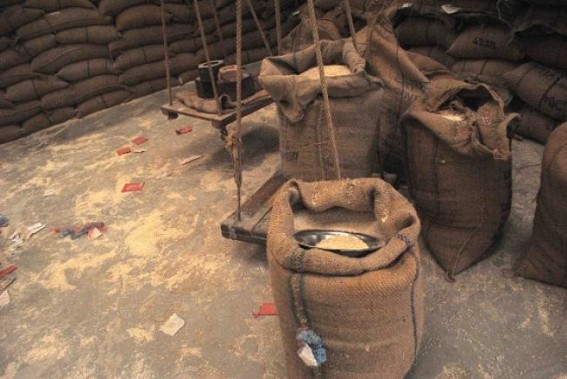TIWN

AGARTALA, July 2 (TIWN): After a prolonged waiting, finally the report of the rice sample which was being collected from the market to ensure about the wax coating in the rice is expected to be declared within the first week of July. The report is expected to render the ultimate decision about the alleged non-edible rice, available in the markets which are mostly coated with wax and are harmful to human hygiene.
However, several questions had been raised against the safety of the state’s people, regarding alleged availability of wax coated rice which is poisonous for the human body. Whether the pubic of the state have been worried about the non-edible rice controversy, the State Government is least bothered about the poisonous rice rampant over the state.
Earlier, talking to TIWN Correspondent, R.K. Noatia, Joint Director for Department of food civil supplies and consumer affairs said that the rice grains which are available at the Ration shops for the public are “safe”.
Acting on this issue of selling non-edible rice in the market, the Department of food civil supplies and consumer affairs has tested the rice grain in the laboratory and found that the rice grains available in the ration shops are safe and purely edible.
Health and family welfare department had taken an initiative to look after the issue of “non-edible rice controversy” and has asked the concerned authority to collect the sample of rice available in the market and to do the laboratory testing of the rice as early as possible.
Therefore, the report of the tested sample expected to be declared by July first week.
Allegedly the shiny looking polished rice which are mostly available in the market and the nearby stores, have gone through various forms of polishing by using water, leather including oil resulted in deteriorating quality of rice in terms of added moisture content and protein depletion.
Reportedly, even after undergoing the threshing process, rice have their natural fibre or husk intact. When this particular rice undergoes the polishing process, the husk gets removed to make the rice grains and thus looks more attractive and shining with the help of wax coat which attracts the eyes of the consumers and they eagerly go for the rice, totally unknown about the fact behind. Due to the process of polishing, the natural fibre that is essential for a good health has been removed from the grain and an extra plastic shine is added to the rice which is harmful for the human body.
During the polishing process, colors, oils and soapstone powders are used to make the rice grain look shiny and radiant. Soapstone powders are extremely harmful for the intestines and the Oil polish adds unnecessary extra fat to the pulses. The water used in the polishing process is unsafe as the source is not known.
- ‘Tripura is a small state! So….’ Congress MLA warned BLOs over Voter List Filtering Process
- With Calcutta High Court Secured 32,000 Teachers Jobs, the 10323 Teachers Issue Back in Tripura
- Uncontrolled & Adamant' : Agartala IndiGo Passenger said after Flight Cancelled with Prior Notification
- Passengers Frustrated as Indigo said its Refunding/ Rescheduling would Start after December 10
- No SMS about Flight Cancelation: Agartala Passengers Stood in long Indigo Rows to ask about ‘Refunding’



